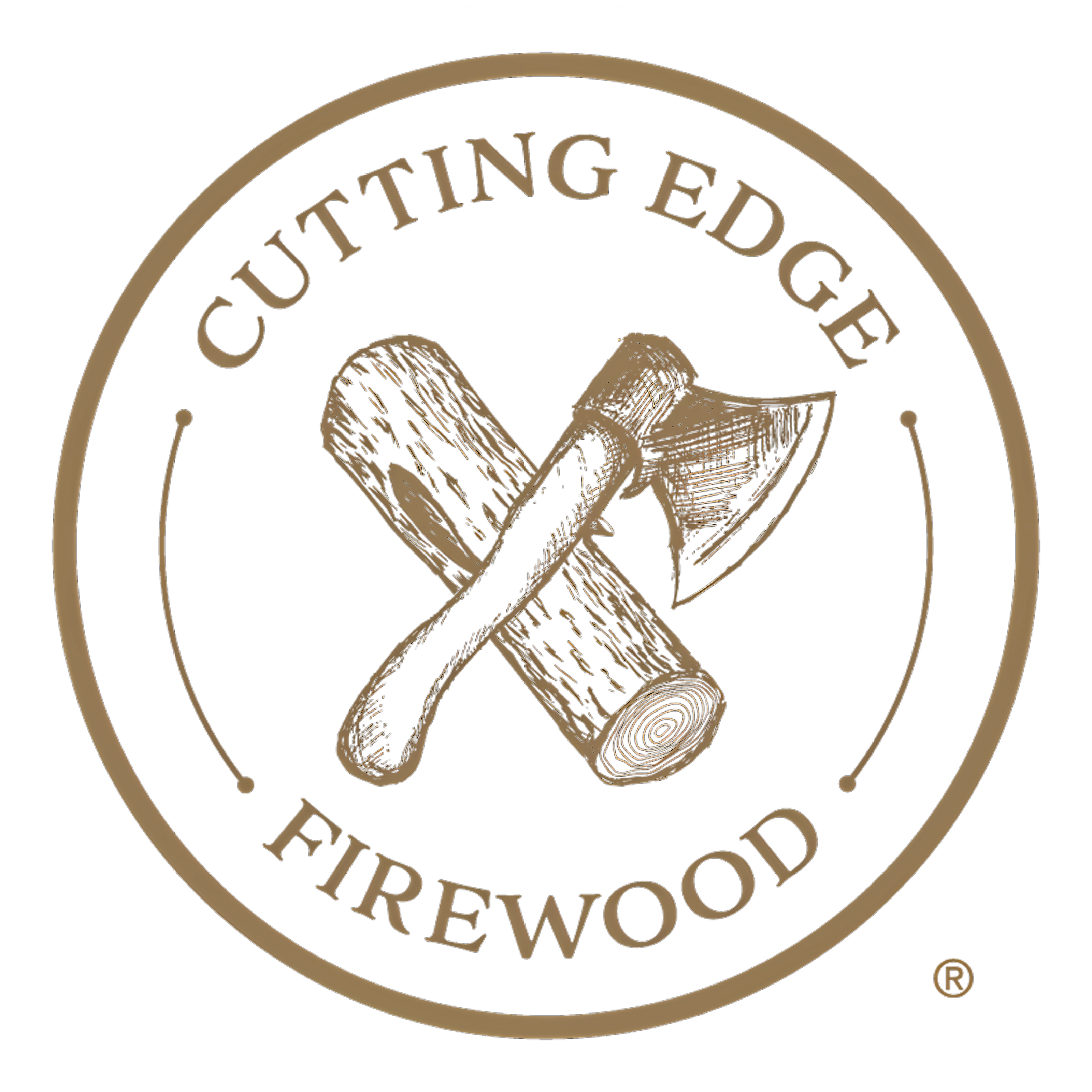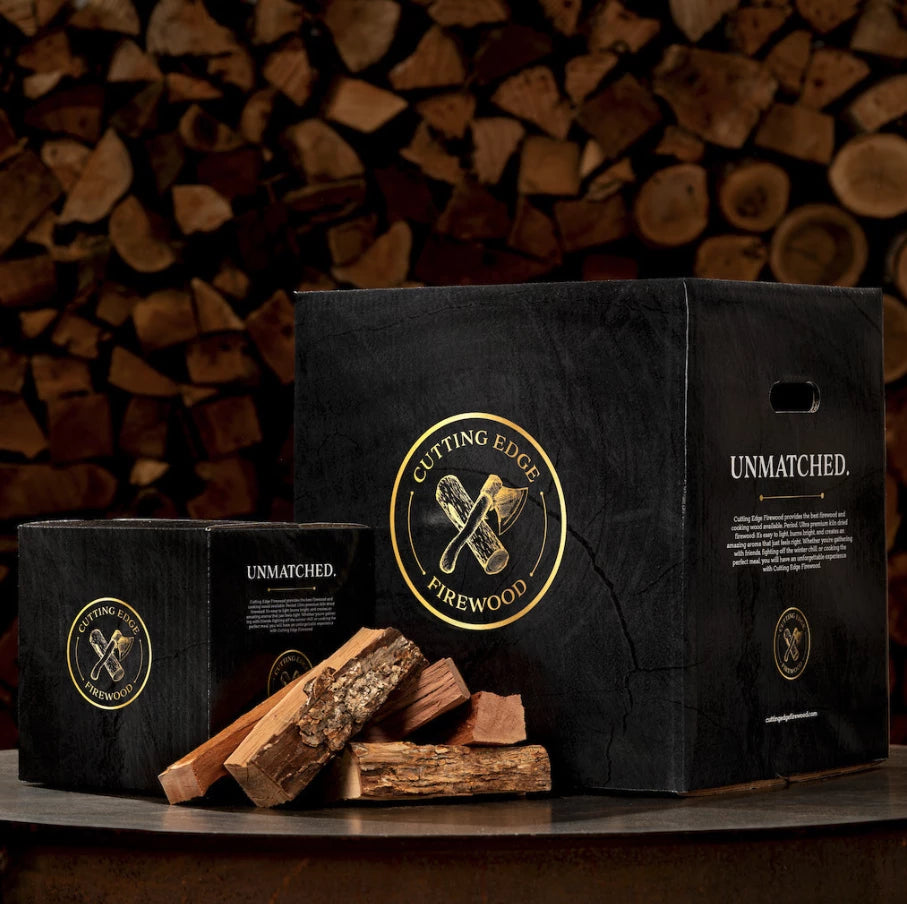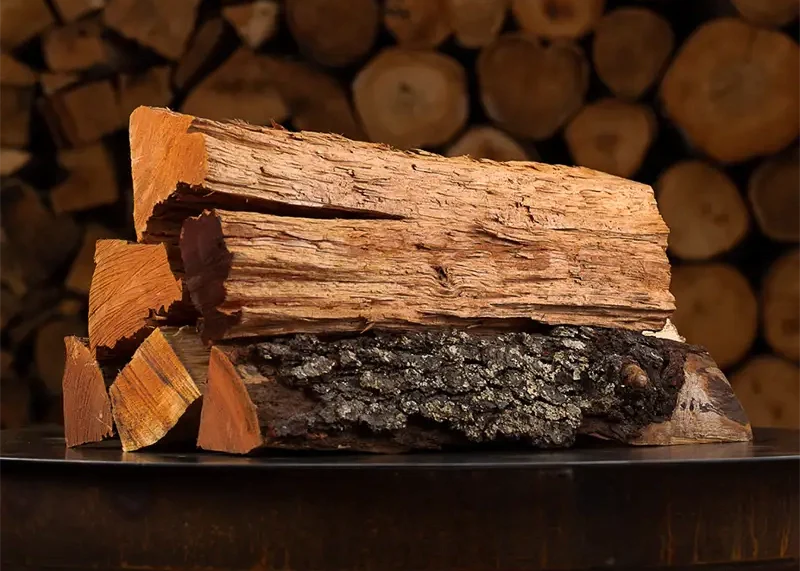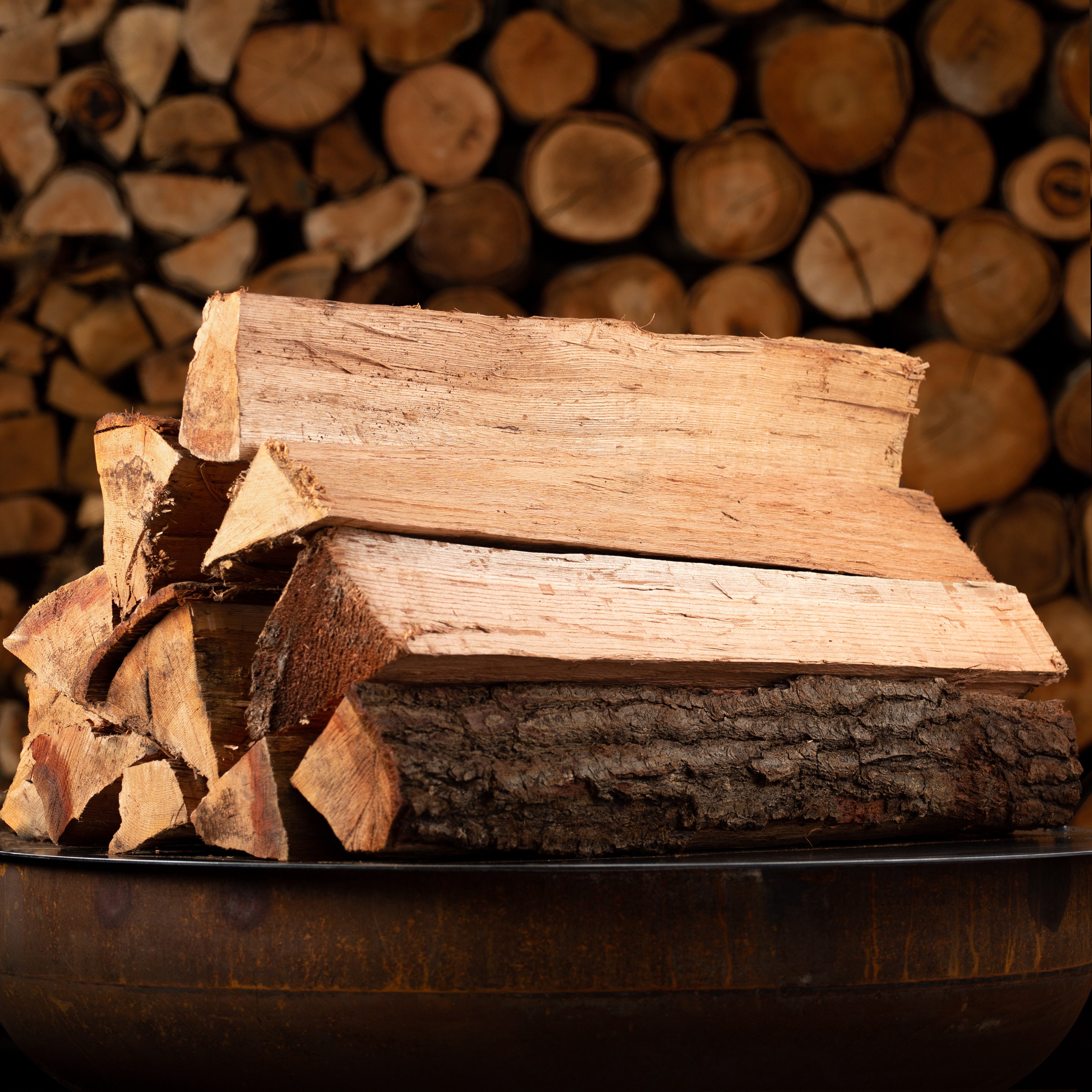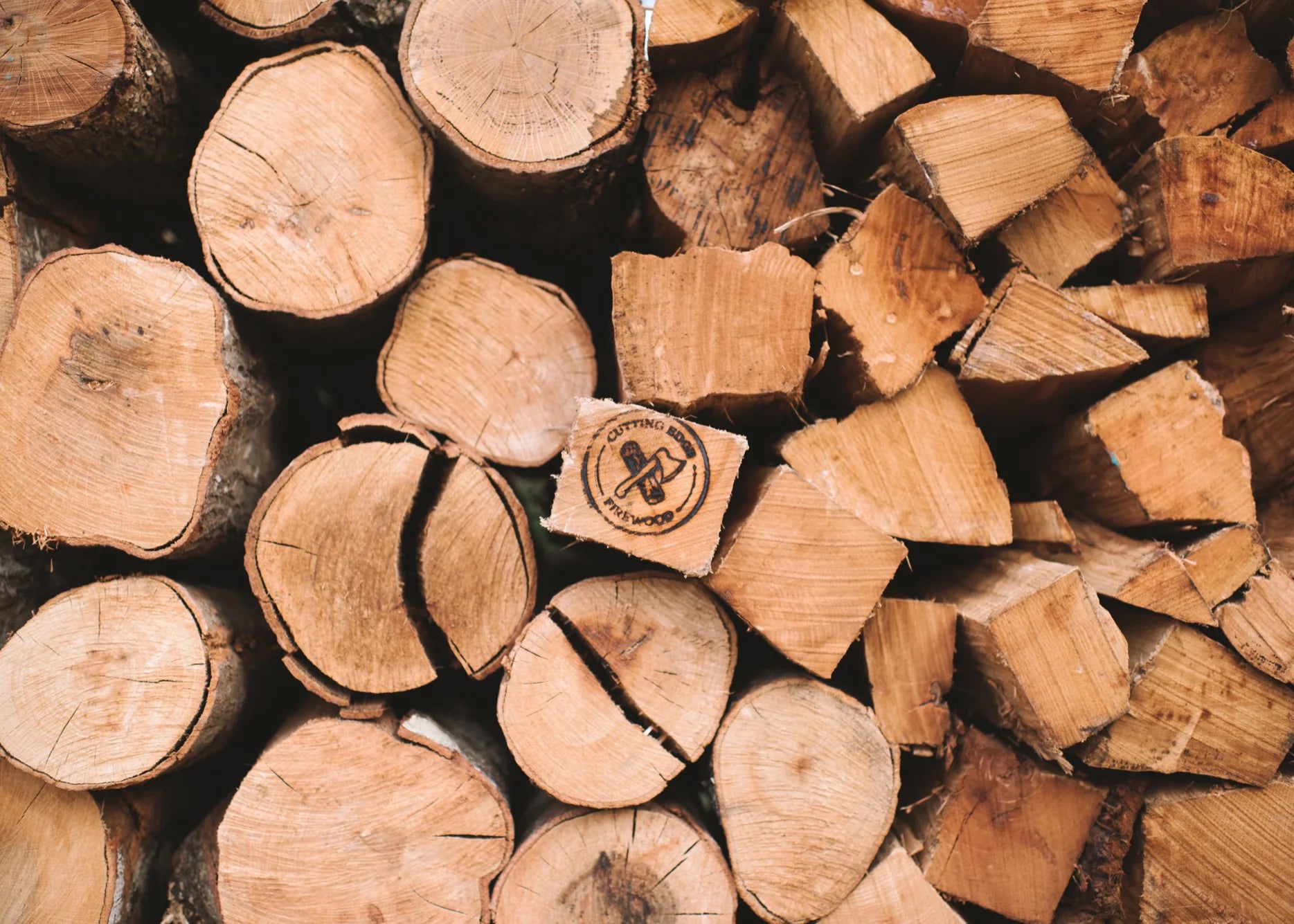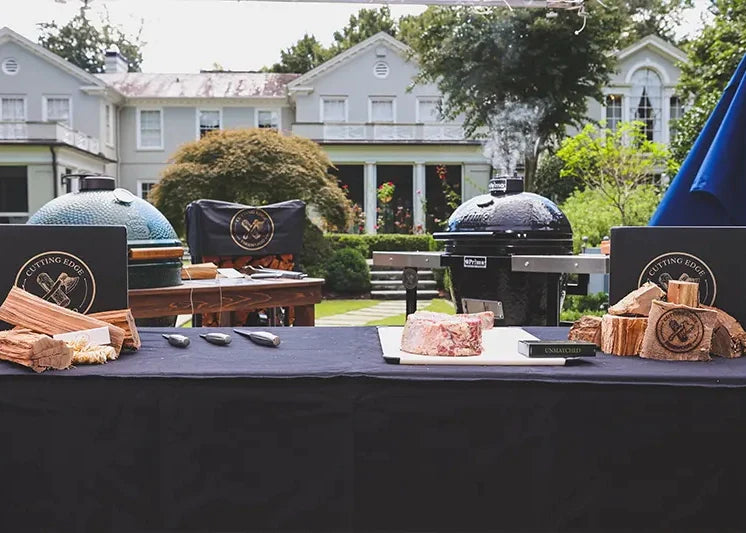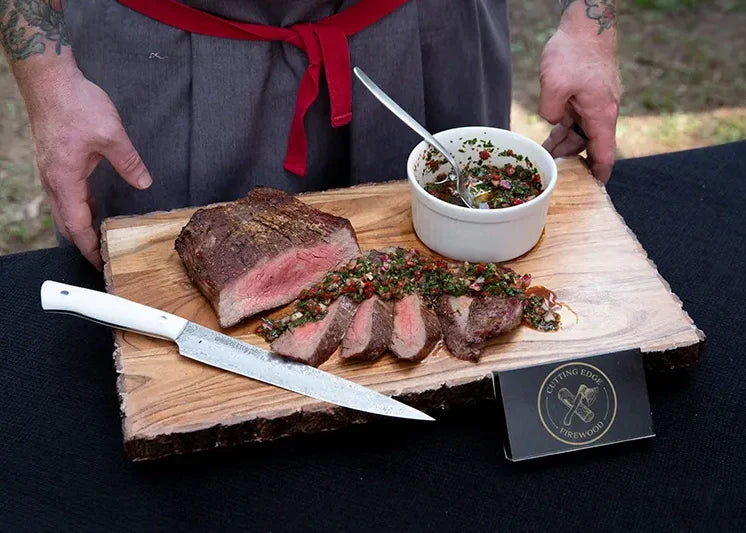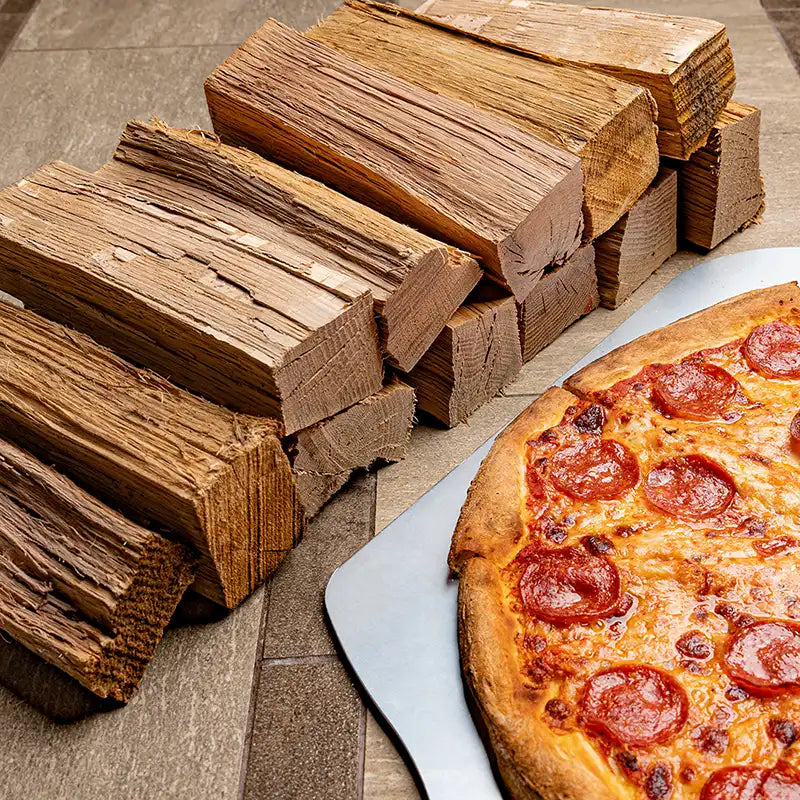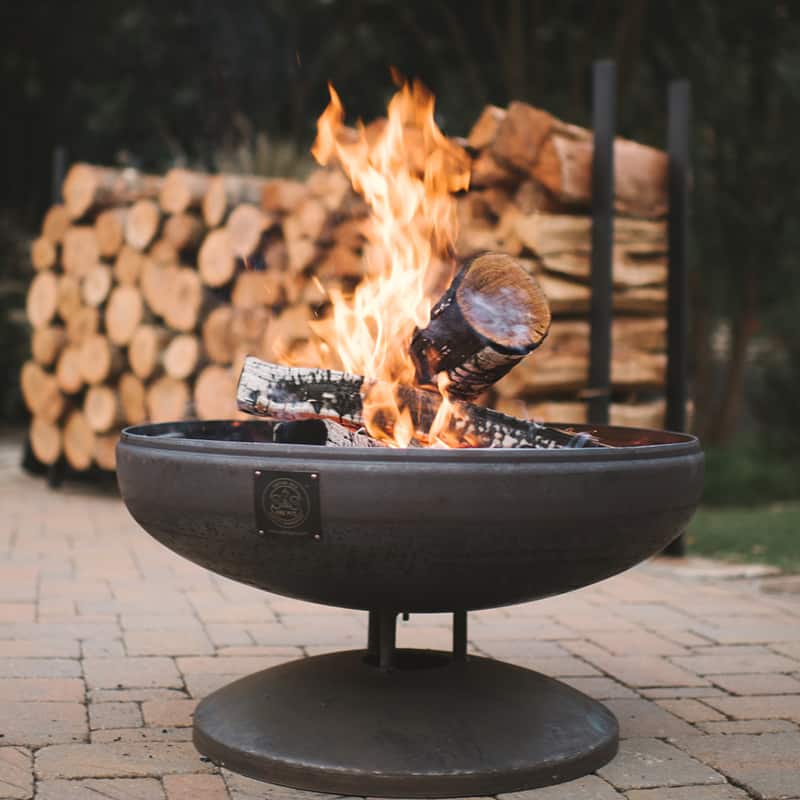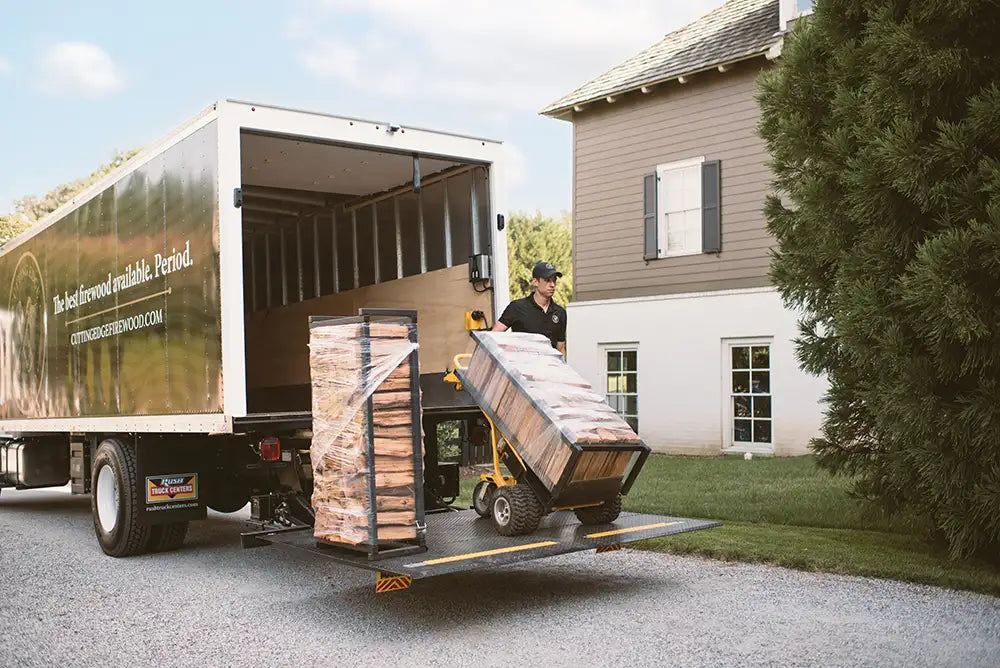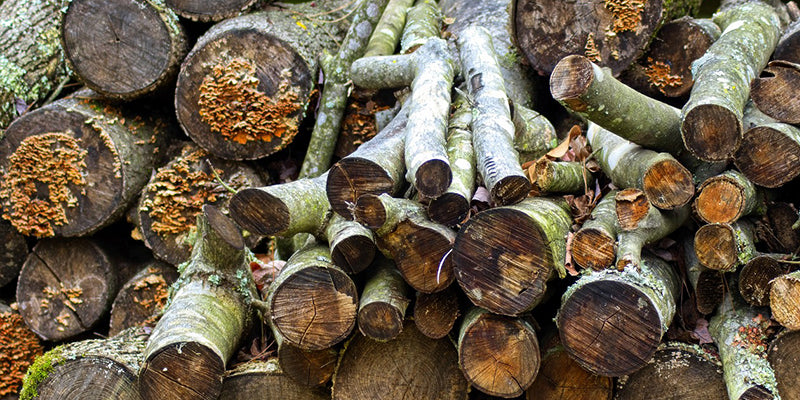If you're exploring different firewood options for your fireplace, outdoor firepit, or stove, then you have probably heard the term "seasoned firewood." Many places recommend seasoned firewood as a great solution, but if you really do your research, you will start to hear horror stories about seasoned firewood.
Although seasoned firewood is a better option than green firewood, it cannot hold a candle compared to the quality of firewood. Almost anyone who has tried seasoned firewood has a story: it was full of mold! It smoked like crazy! It worked well one day, but not the next! My chimney cleaning bill was huge!
But what exactly is “seasoned” firewood, and how is it different from green firewood or kiln dried firewood?
What Is Seasoned Firewood?
Put simply, saying that wood has been “seasoned” means that it has been left out to dry for a long period of time, so the moisture from the tree’s cells and its sap have evaporated from the wood.
Seasoned firewood is distinguished from green firewood and kiln dried firewood. Green firewood has been freshly cut, whereas kiln dried firewood has had the moisture removed quickly through a kiln.
In practical conversation, the word “seasoned” is used in many different ways. When people talk about seasoned firewood, they are often referring to firewood that you have seasoned themselves, or that they received from a non-professional, non-store supplier, like a friend down the road. This means that there is very little quality control, and wood that you think has been well seasoned may still be loaded with moisture.
If you’re looking to optimize your fireside experience this year, one of the most important pieces of advice to follow is to avoid seasoned firewood at all costs. A basic understanding of seasoned firewood and its most prominent characteristics can help you understand why. Read on for more information on the basics of seasoned firewood and why it can be such a poor choice for your fireplace or fire pit.
HOW CAN YOU TELL IF FIREWOOD IS SEASONED?
As the primal allure of gathering around the fire beckons, ensuring you have the right type of wood is key. Knowing if your firewood is seasoned is essential to achieving that mesmerizing and authentic fireside experience. But how can you distinguish whether your wood is seasoned or ultra kiln dried?
One straightforward method is using a moisture meter. This tool measures the moisture content in pieces of wood, helping you determine if the wood has been dried enough for a better burn.
Seasoned wood generally has a higher moisture content, usually around 20 percent. Meanwhile, ultra kiln dried wood from Cutting Edge Firewood has a moisture content between five and 10 percent, making it ultra lightweight and allowing for a cleaner burn.
You can also observe the appearance. Seasoned wood appears darker, often with cracks at the ends. On the other hand, our ultra kiln dried wood always appears fresh and bright.
Beware of the tell-tale signs of wood left out to rot — for instance, the presence of termites, mold, or fungus. Such wood, when burned, detracts from the earthy, inviting aroma you'd want from your fire. Remember, "seasoning" basically means leaving the wood out to rot, often affecting air circulation, attracting bugs, and diminishing the overall quality.
ULTRA KILN DRIED WOOD AT CUTTING EDGE FIREWOOD
Transcend the ordinary and delve into the sensory experience that is ultra kiln dried wood from Cutting Edge Firewood. Unlike the smokiness of wet wood or the unpredictability of seasoned wood, ultra kiln dried wood promises consistency. Enveloped in the enticing aroma reminiscent of our ancient roots, this wood offers a cleaner burning experience.
Using specialized ovens that far surpass standard drying requirements, each piece of wood undergoes rigorous drying. The result is wood with incredibly low moisture content, ensuring less smoke and a better burn every time. This careful process ensures the wood you choose transforms your firepit or wood stove gatherings into something memorable.
HOW SHOULD YOU STORE ULTRA KILN DRIED WOOD?
Storing ultra kiln dried wood correctly is fundamental to preserving its superior quality. Because ultra kiln dried wood has such a low moisture content, you don’t have to worry about air circulation as you would with ordinary seasoned wood.
If you’re storing your wood outside, you should also choose a dry location where the wood is shielded from direct rain. Using a firewood rack can also help you organize and stack your pieces of wood efficiently. Remember, proper storage not only maintains the wood's quality but also keeps it free from pests like termites or excessive mulch buildup.
If you’re storing Cutting Edge Firewood, we recommend storing your wood in one of our firewood racks or in the box it comes in. These are the best ways to ensure the quality of your firewood remains at its peak.
Incorporate these practices, and every time you fetch a piece of wood, you can enjoy a fireside experience that resonates with nature's ancient call.
The Difference between Partially Seasoned and Fully Seasoned Firewood
Before wood has been dried out, it is considered “green.” That means it still contains a considerable amount of moisture, which is stored in both its cells and its sap. In fact, freshly chopped wood contains about 50 percent water. Firewood is not considered fully seasoned until the moisture content is below 20 percent. This obviously requires a significant amount of drying, and it makes seasoning your own firewood a major challenge.
In order to properly season wood, you will need to cut the wood and stack it as soon as the tree has been taken down. It must be stacked in a dry location, and then left to dry for over a year. Then, if you're lucky, the moisture content will be below 20 percent.

It is important to note that the term “green” doesn’t just refer to the color of the firewood. Your firewood will lose its green color as it dries out during the seasoning process--but that doesn’t mean the moisture content is low enough for a great experience near your firepit.
As we said earlier, usable firewood requires a year or more to season. That means the wood needs to be left out to dry for long after it initially starts to lose its green color. Without this visual cue, it can be difficult to tell whether your firewood is partially seasoned or fully seasoned. And if it’s only partially seasoned, you definitely won’t end up with the firepit experience you want.
Why Seasoned Firewood is so Inconsistent
Have you ever wondered why some seasoned firewood provided a decent fire, but other times the fire was awful? Ever wondered why your fire is smoking like crazy and lacks any real flame? Or why you had to use 8 fire starters, lighter fluid, and a fan to get the fire going?
The problem with seasoned firewood is that it is incredibly inconsistent. If someone has cut and split logs, then stacked them properly to dry, and kept them in a dry location, then the wood should have about 20% moisture and work reasonably well.
Unfortunately, most firewood providers don't do this. They might stack the wood outside where it gets rained on regularly. They might not even stack it, we've driven by many providers who simply have a large pile of wood. The firewood on top and in the sun might dry out, but the firewood at the center of the pile will stay extremely wet and start growing mold and fungus. You also never know how long they've been seasoning the firewood - instead of drying for a year it might have been cut 1-2 months ago!

Cutting Edge Firewood, on the other hand, is able to provide consistent quality. We follow an extremely rigorous drying process, and do it for every piece of firewood we deliver.
Although USDA only requires kiln dried firewood to cook at 175 degrees for 75 minutes, we go far beyond these standards and dry our wood at 250 degrees for 48 hours. This extended process guarantees that our firewood provides the best possible fireside experience, every time.
The Downsides of Using Seasoned Firewood Instead of Kiln Dried Firewood
The inconsistency isn’t the only downside of choosing seasoned firewood over kiln dried firewood. Even if your firewood is fully seasoned, the quality still doesn’t compare. Consider some of the well-known issues of seasoned firewood:
- It’s harder to light. No matter how long you’ve been seasoning your firewood for, the moisture level will almost always be higher than it is for kiln dried firewood, so it’s naturally more difficult to get it burning. Plus, when you season your own firewood, you have to cut it into chunks that facilitate the seasoning process, and you’re likely to end up with odd shapes that don’t take well to flame. That means you may end up spending almost as much time trying to get the fire started as you do enjoying your time around the fire with family and friends.
- The smoke smells bad. The smell of seasoned firewood simply doesn’t match up to the aroma of kiln dried hickory, for a variety of reasons. Most importantly, the higher water content can give seasoned firewood a musty smell, which gets even worse if the firewood was infested with mold at some point during the seasoning process--a scenario that is far from uncommon. As a result, you’ll probably end up spending your night around the firepit trying not to let the smell of the smoke bother you. Plus, unlike the aroma from kiln dried firewood, the musty smell will stick to your clothes (even after multiple washes), so you may end up ruining your favorite shirt!
- It produces more emissions. When you burn seasoned firewood, it releases more emissions than when you burn kiln dried firewood. Seasoned firewood burns at a lower temperature, which means that more toxic compounds are released into the atmosphere. Therefore, choosing seasoned firewood over kiln dried firewood will make your firepit less environmentally friendly.

- Bugs, mold, and fungus: As firewood sits outside and air-drys, it attracts bugs, mold, and fungus. You don't really want to be near a fire with these things, and you certainly wouldn't want to keep that firewood inside your house! Bugs, mold, and fungus are attracted to the moisture in wood, so if you're storing kiln dried firewood in a dry place the wood will stay clean for a much longer amount of time.
- Seasoned firewood is decomposing: As firewood seasons, it starts to decompose. This means the wood breaks down and becomes less dense, which means it will burn much more quickly. We place our firewood in the kiln within days of it being cut down, which means the wood stays dense and dry and will burn for longer!
- Seasoned firewood creates more creosote: Fire safety is important, and creosote build-up is one of the greatest dangers for modern fireplaces. Creosote occurs when the moisture in the wood burns up into the chimney, then cools off and sticks to the chimney walls. If your seasoned firewood has moisture in it, then you will create creosote overtime. It will build more slowly than green firewood, but it will still build. Using properly kiln dried firewood, however, has much less moisture and will therefore create little to no creosote, giving you a safer experience.
This chart provides a great overview of the differences between Cutting Edge Firewood, seasoned firewood, and green firewood:

Does Cutting Edge Firewood Sell Seasoned Firewood?
No. We believe in providing our customers with only the highest quality firewood products available. Cutting Edge Firewood provides the best firewood available. Period.
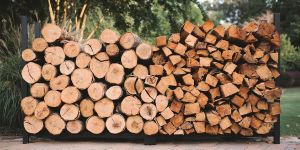
Now that you know about the nature of seasoned firewood and the things you’re likely to experience when you try to use it at summer get-togethers or during cold winter nights, you’re hopefully wanting to avoid it. However, if you’re not convinced, contact us today. We're passionate about great fires and would be happy to answer your questions.
Our incredible fire experience starts before the first match strike. We offer "white glove artisan delivery" to our customers in the Atlanta, GA area to show how passionate we are about our products.
Outside of Georgia? No problem! We ship packages of firewood all cross the United States. You can experience the best firewood available by clicking the button below.
Outside of Georgia? Click HERE for Shipping Options
Until then, you can count on Cutting Edge Firewood to provide the kiln dried firewood you need for your firepit or fireplace.
